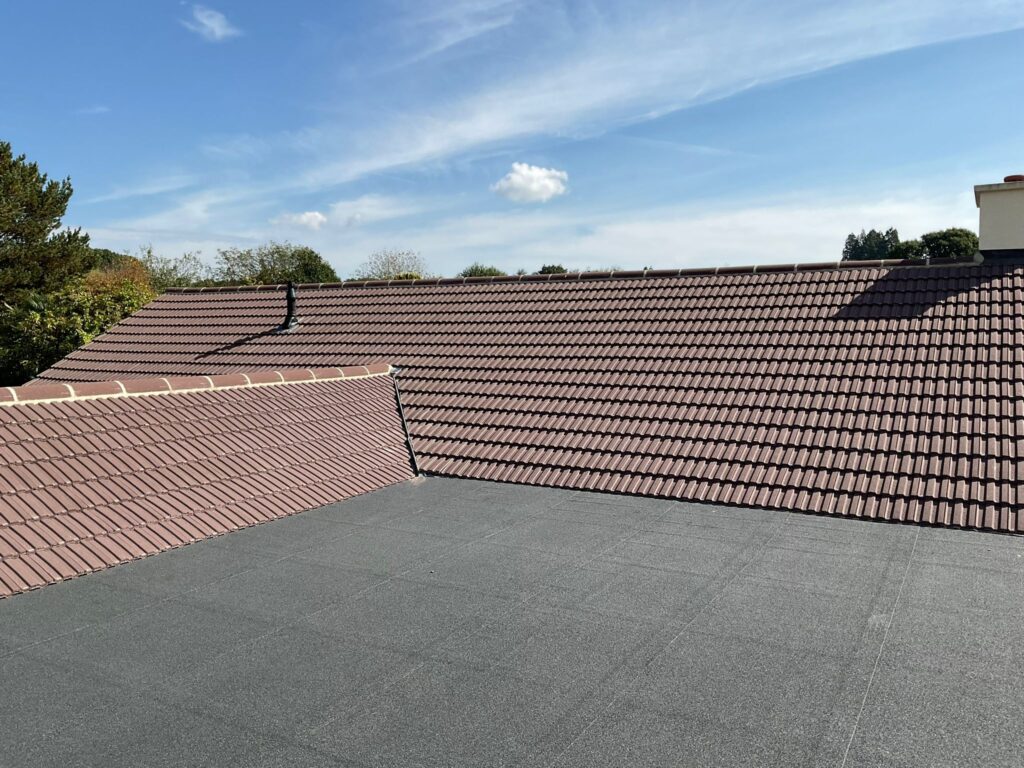A tiled roof is one of the most durable and attractive options for protecting a property from the elements. However, over time, even a well-constructed roof can develop issues such as slipped tiles. This problem might seem minor at first glance, but it can lead to leaks, damp, and further structural damage if not addressed promptly. At LJ Roofing Covingham, we specialise in identifying the root causes of slipped tiles and providing lasting, professional repairs for homes across Covingham, Wiltshire.
Understanding Why Roof Tiles Slip
Slipped tiles are a clear indication that something within the roof structure is no longer performing as it should. While natural ageing plays a part, other environmental and structural factors often contribute to the issue.
1. Weather Damage
Wiltshire’s weather, particularly heavy rain, frost, and strong winds, can gradually weaken roof fixings. When water freezes between tiles or within small cracks, it expands, loosening the tile over time. Wind uplift can then dislodge tiles that are already slightly out of position.
2. Ageing Mortar and Fixings
On many older roofs, the mortar that holds ridge or hip tiles in place eventually crumbles with age. Similarly, metal nails and clips used in older installations can corrode, losing their grip and allowing tiles to shift or slip. Once a few fixings fail, it’s common for nearby tiles to follow.
3. Roof Movement
Buildings naturally expand and contract with temperature changes, and over years, this subtle movement can weaken the bedding and fixings that secure roof tiles. If your roof timbers begin to warp due to moisture or settlement, this can create gaps where tiles no longer sit properly.
4. Poor Installation
If the original installation was not carried out correctly — for instance, if nails were not secured properly or the wrong type of tile was used for the roof pitch — the tiles are far more likely to come loose over time. A professional inspection from LJ Roofing Covingham can identify whether installation issues are behind repeated tile slippage.
5. Moss and Debris Build-Up
Moss, leaves, and other debris hold moisture against the tiles, which can accelerate deterioration. The damp environment also increases the likelihood of frost damage and weakens the underlying mortar or fixings.
Why Slipped Tiles Should Never Be Ignored
A single slipped tile may not seem urgent, but even a small opening can allow rainwater to penetrate the underlay and roof structure. Over time, this can cause:
- Rotting of roof timbers.
- Damp patches on ceilings or walls.
- Increased risk of leaks spreading across adjoining sections.
- Reduced insulation effectiveness and heat loss.
Addressing the issue early not only prevents costly damage but also helps maintain your property’s energy efficiency and visual appeal.
How Slipped Roof Tiles Are Professionally Repaired
At LJ Roofing Covingham, we use proven repair methods to ensure each tile is properly reinstated and the integrity of your roof is fully restored.
Step 1: Roof Inspection
We start with a detailed assessment to determine the cause of the slippage — whether it’s failed fixings, structural issues, or general wear and tear. Understanding the root cause is key to preventing the problem from recurring.
Step 2: Tile Refixing or Replacement
Slipped tiles are carefully lifted and inspected. If they’re intact, they can usually be refixed using modern, corrosion-resistant clips or nails. Damaged tiles are replaced with new ones that match your existing roof to maintain its appearance and protection.
Step 3: Repairing Underlying Issues
If the battens, underlay, or mortar bedding show signs of deterioration, we carry out repairs before re-laying the tiles. This ensures the roof’s strength and weather resistance are fully restored.
Step 4: Final Checks
Once repairs are complete, the roof is checked for alignment, stability, and water-tightness. A well-secured tile should sit flush with its neighbours and resist lifting even in strong winds.
Preventing Future Tile Slippage
While roof tiles are built to last, a few preventative measures can help reduce the risk of future issues.
- Regular Roof Inspections: Arrange for your roof to be checked annually or after severe weather to catch early signs of movement.
- Keep Gutters and Valleys Clear: Debris buildup can trap moisture and increase stress on tiles.
- Control Moss Growth: Treating moss can prevent water absorption and reduce frost-related damage.
- Ensure Proper Ventilation: Good roof ventilation prevents condensation, which can weaken fixings and battens.
By investing in routine maintenance, homeowners can extend the lifespan of their tiled roof and avoid the inconvenience of unexpected repairs.
When to Call a Professional
If you notice slipped, cracked, or missing tiles, it’s best to contact roofing experts as soon as possible. Attempting to fix the problem yourself can be dangerous, and temporary solutions rarely address the underlying cause. LJ Roofing Covingham provides safe, efficient, and long-lasting tile repair services tailored to homes in Covingham, Wiltshire.
Our experienced team ensures each repair meets the highest standards, helping your roof withstand changing weather and maintain its protective strength year-round.
Conclusion
Slipped tiles are often the first warning sign of deeper roof issues — whether from weather exposure, ageing materials, or poor installation. Timely, professional repair not only restores your roof’s appearance but also safeguards your home against leaks and structural damage. Homeowners in Covingham, Wiltshire, can rely on LJ Roofing Covingham for expert diagnosis, precise tile repair, and lasting roof protection that keeps every property safe, dry, and secure.
Call us on: 01793 569 296
Click here to find out more about LJ Roofing Covingham
Click here to complete our contact form and see how we can help with your roofing needs.

